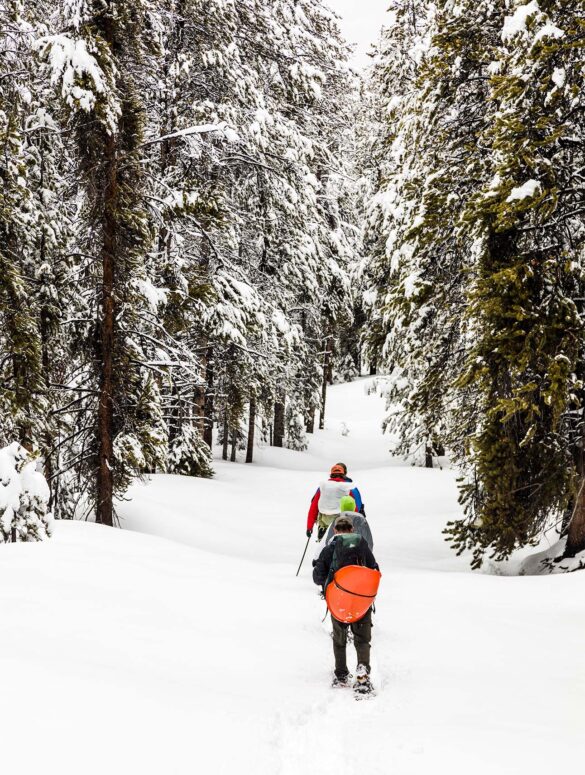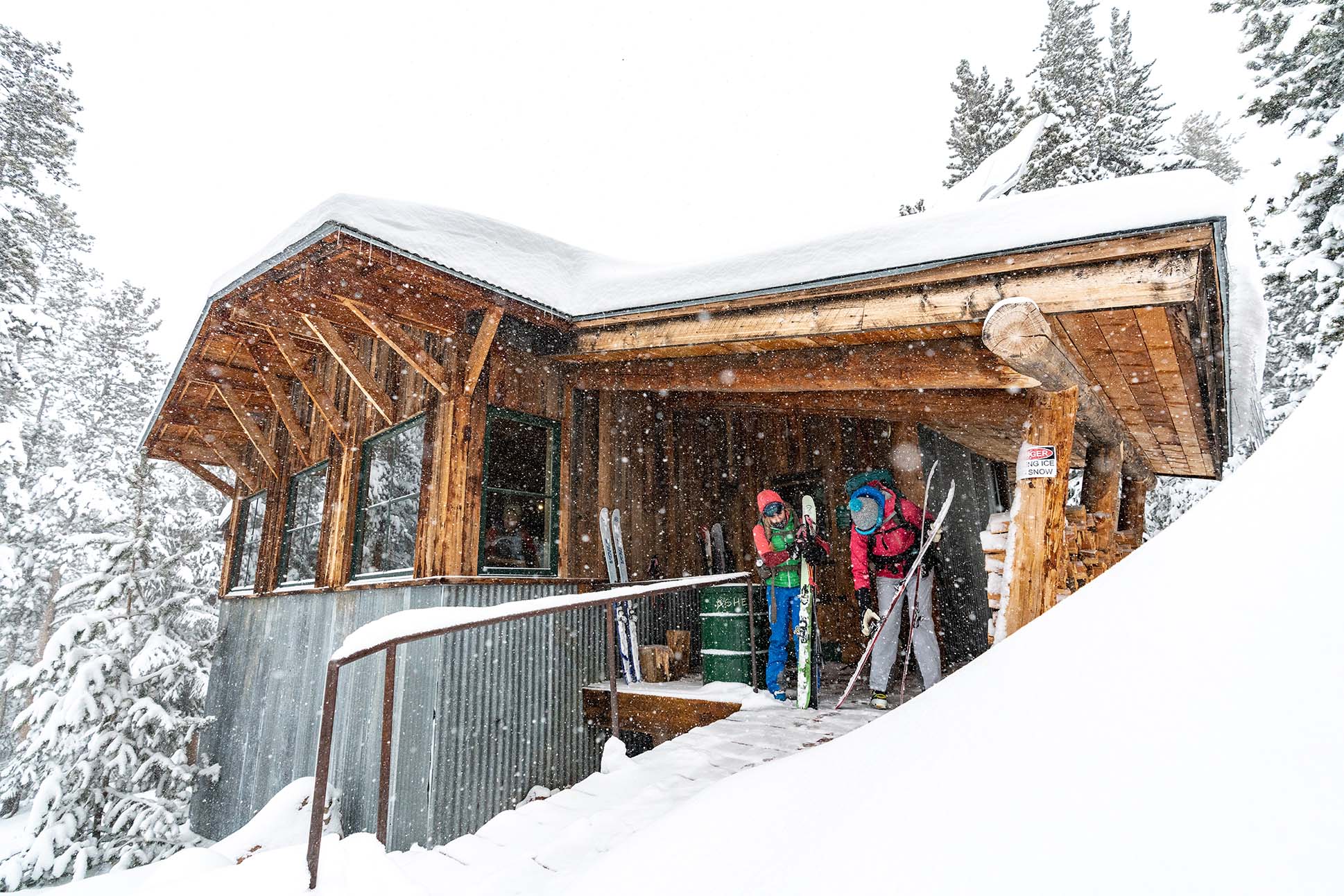Text by Cindy Hirschfeld
Images by Ann Driggers, Caelinn Elizabeth, and Stephanie Stocking
Journeying to a backcountry hut in the middle of winter is nothing short of magical. I try to go on several such trips each year, skiing through forests and high-alpine meadows on alpine touring gear, the snow glittering like thousands of tiny diamonds and the shuffle of my skis—and, perhaps, easy conversation with friends—the only sound for miles. One of my favorite moments is when a hint of smoke reaches my nose, signaling that the hut, with its welcoming wood-burning stove, is close by.
Once at the hut, there’s a unique satisfaction that comes from swapping out sweaty layers for dry ones, laying out my sleeping bag on a bed, helping stoke the fire in the stove, and settling in with snacks and wine for games, storytelling, and laughs. For the next day or two, my friends and I will immerse ourselves in the vast wilderness surrounding the hut, making turns in pillowy, untracked powder on open slopes or in protected glades, depending on snow and avalanche conditions.
I’m not alone in my appreciation for these secluded, off-the-grid accommodations. “Getting into nature in the wintertime is a really special thing,” says local gallery director and marketing specialist Claire de L’Arbre, who has seen the demand for hut reservations soar since she started regularly planning hut trips a decade ago. “It feels very luxurious to sit in a cabin with your friends 7 miles from [civilization] and [still] have lights and a propane stove.”
Colorado is home to several backcountry hut systems, including the 14 huts owned by the 10th Mountain Division Hut Association, part of a network of 34 remote refuges connected by 350 miles of trails in the central Colorado Rockies. They were conceived by legendary Aspen architect Fritz Benedict, who modeled them after huts he encountered in the European Alps while serving in the U.S. Army’s 10th Mountain Division during World War II. He and other Aspenites founded the association in 1980, naming it in honor of the fallen soldiers of the 10th, and the first huts, McNamara and Margy’s, were completed two years later.
Since then, countless adventurers have sought shelter in these huts on their sojourns into Colorado’s sprawling backcountry. “We are always inspired by the simplicity of life on a hut trip,” says Aspen naturalist Rebecca Weiss, who has been bringing her two children on hut trips with her husband, Austin, since the children were toddlers. “It’s pared back to the essentials, and digital stuff is out of the picture. We love how that feels and always aspire to simplify regular life back at home.”
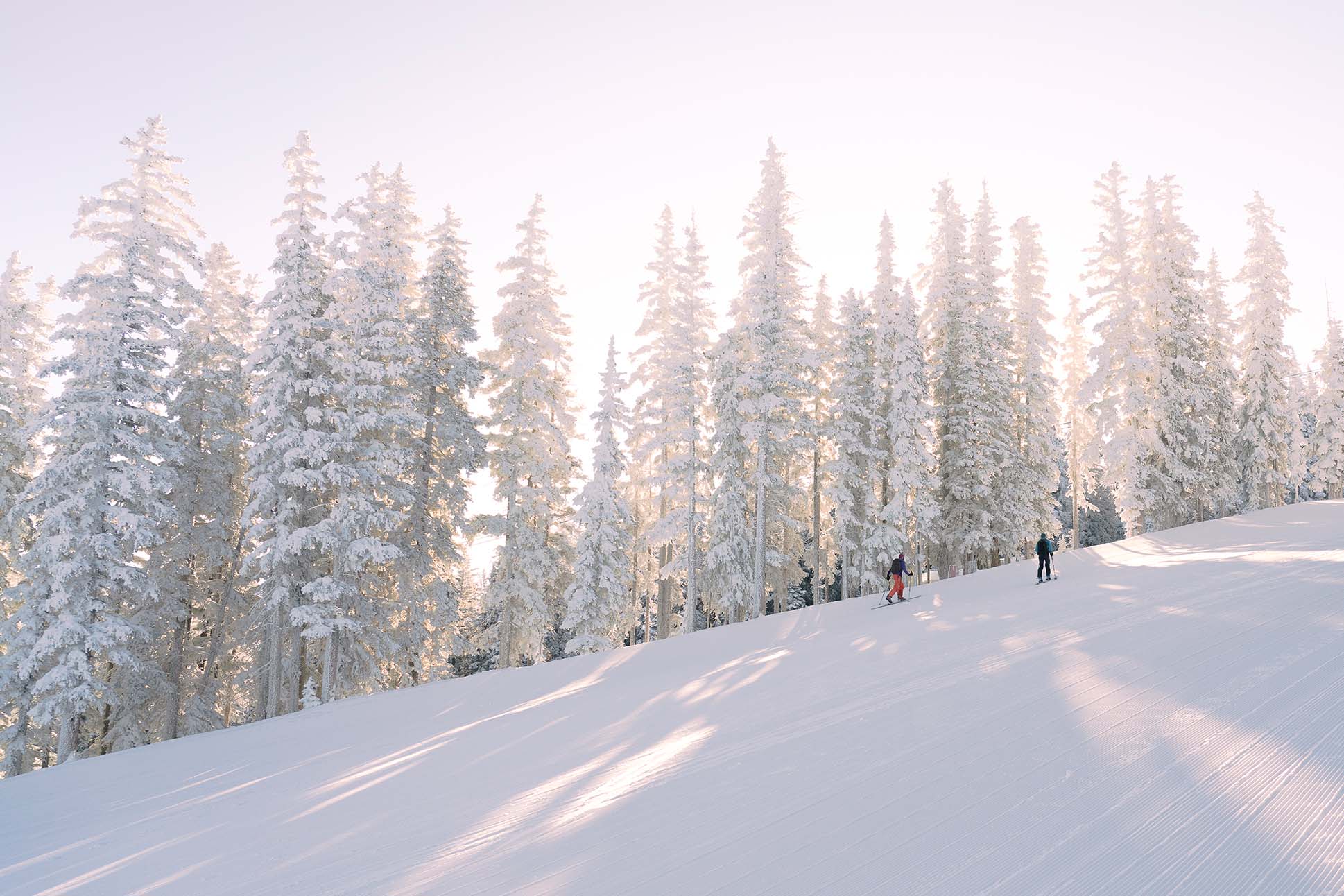

As climate change affects the Rocky Mountains, however, warmer temperatures and shorter winters threaten the likelihood of winter hut trips. These days, visitors who used to ski in for late November or early December trips are just as likely to find themselves hiking part of the way, skis on their backpacks, for lack of snow. Ski mountaineers who use the huts to access the high peaks in April and even early May are finding their favorite lines melted away much earlier in the year. And the hugely increased threat of wildfire all over Colorado could have a devastating impact on the huts; in summer 2021, a fire that started at a nearby state park claimed 4,000 acres of land only a few miles from two of the 10th Mountain Huts.
In response to these exponentially growing impacts of climate change—and knowing that hut users tend to demonstrate a heightened sense of stewardship and awareness of their surroundings—the 10th Mountain Division Hut Association’s board of directors initiated a formal effort known as the 10th Mountain Climate Project in 2019. The project aims to share actionable information on environmental concerns in the region, make the association’s business operations more sustainable, and increase resource efficiency at the huts.
“We try to make sure that what we do is thoughtful and consistent with our mission,” says 10th Mountain Division Hut Association Executive Director Ben Dodge. “We don’t want to be preachy about this.”
One of the first steps was commissioning CLEER, a Carbondale-based energy nonprofit, to come up with a plan to reduce carbon emissions at the huts as well as at 10th Mountain’s administrative office in Aspen and its operations base in Leadville. The association began by implementing changes close to home, working with the local Community Office for Resource Efficiency to cover part of the cost of retrofitting its three 30-year-old employee-housing units in Aspen with rooftop solar panels and converting from natural gas to almost 100 percent electric in July 2022. Other measures include switching out the huts’ CFL light bulbs for more efficient LED lights and finding ways to reduce firewood consumption, including drilling wells near some of the huts so that visitors aren’t as reliant on the wood-burning stoves to melt snow for water.
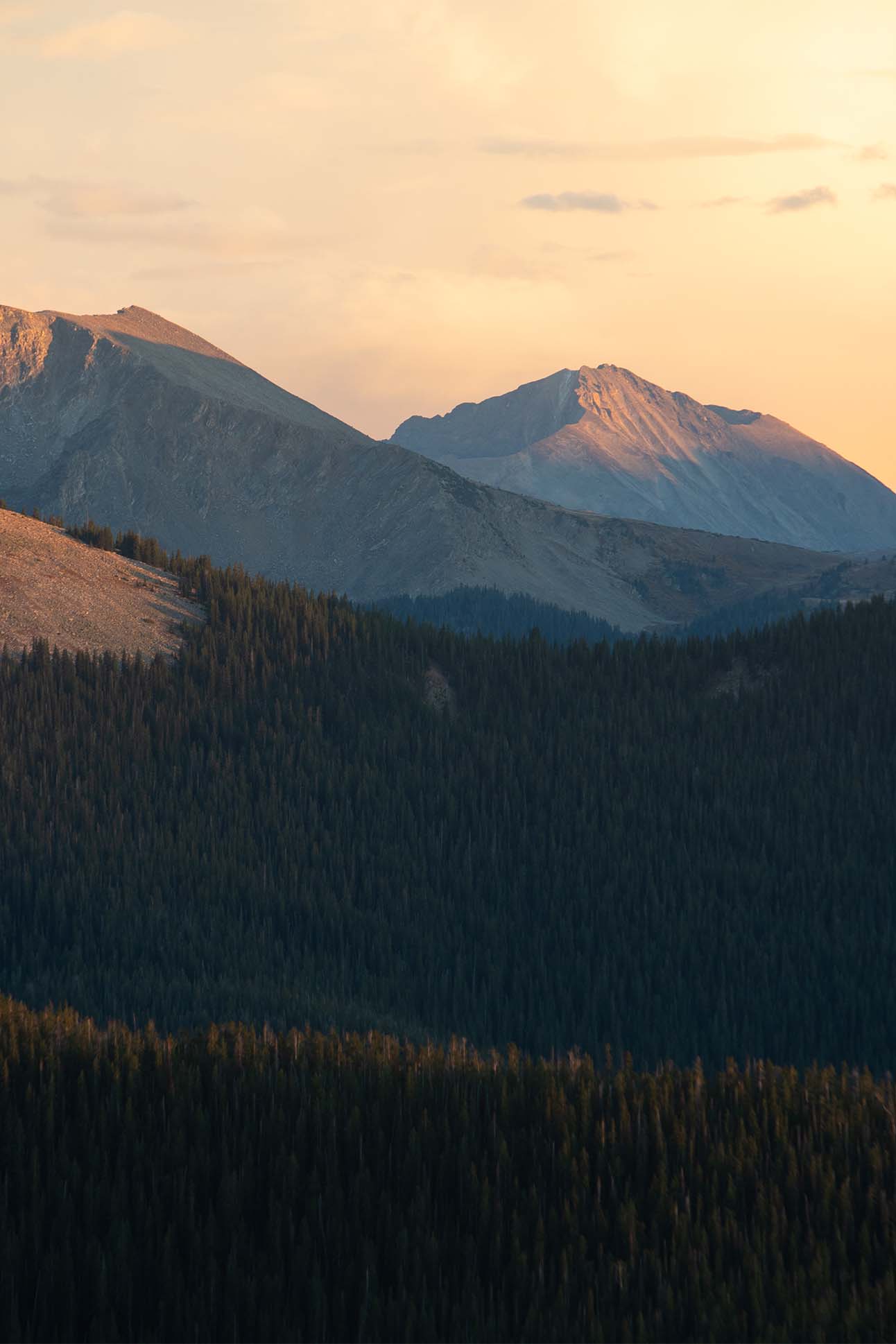
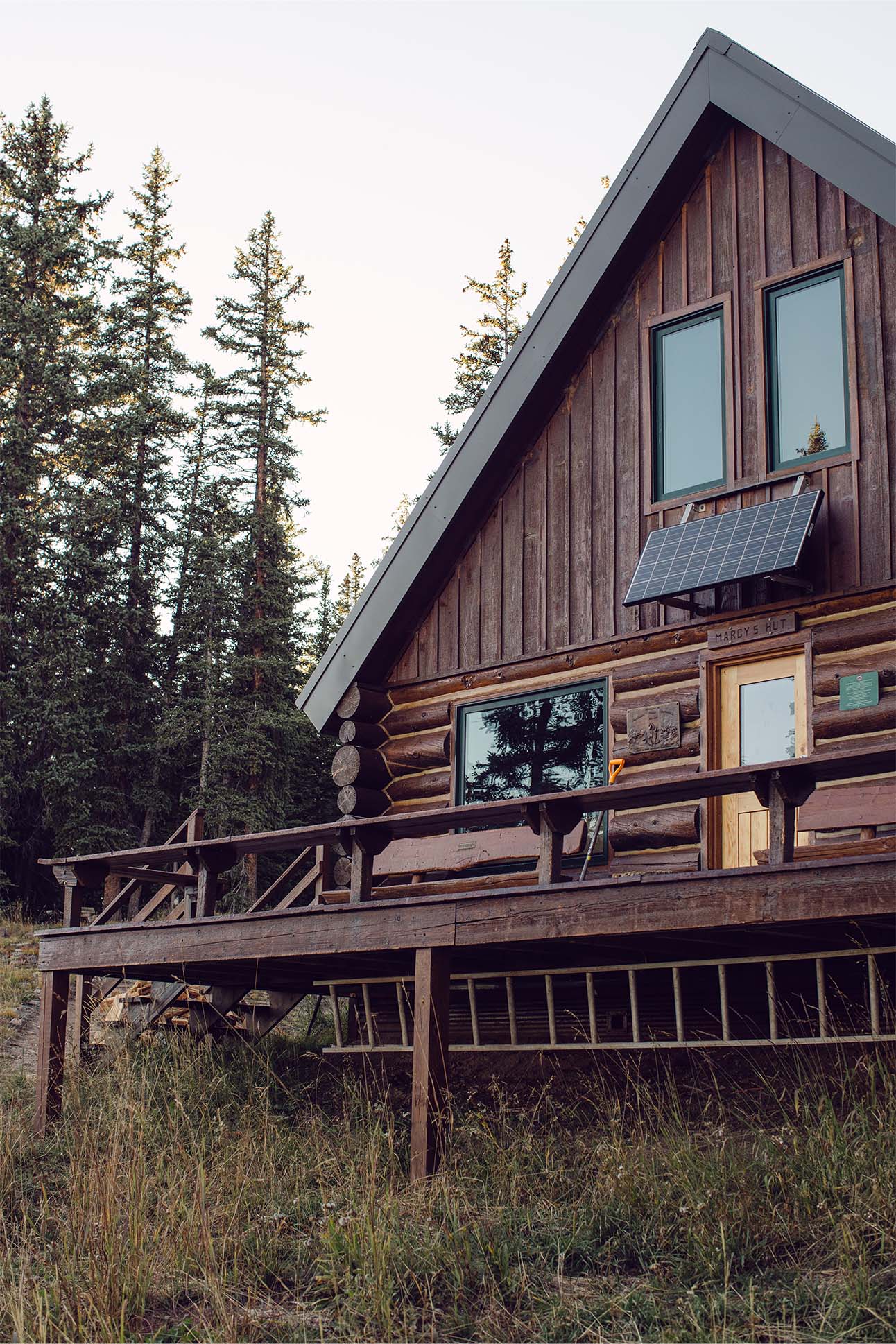
Part of the 10th Mountain Climate Project focuses on continued wildfire mitigation, which the hut association has been practicing in earnest for almost 20 years. Tactics range from clearing dead trees and brush to making the surrounding forest more resilient against drought. This past summer, the association received grant funding to equip each hut with giant rolls of flame-resistant fabric that can be wrapped around the structure to help ward off wildfire.
One of the 10th Mountain Climate Project’s top priorities, however, is also its simplest: inspiring climate action among the hut system’s community of ski mountaineers. The huts have long stocked a mix of field guides and naturalist literature to foster self-reliance among visitors as well as a deeper understanding of the environment around them; last winter, a new title was added to the shelves: The World’s Littlest Book on Climate, which Dodge calls “the coolest book a person can read in about five minutes.”
Eventually, Dodge envisions the hut association becoming more actively involved in promoting climate-friendly legislation, too. “Us changing our employee housing is not going to change the world, but policy will,” he says.
Hut-goers know that in addition to reveling in the magic of these backcountry havens, there’s work to be done to keep them in good shape for the next group, from restocking firewood and shoveling snow to taking small forward-thinking measures to ensure the huts can be enjoyed for years to come. “When you stay at a hut, you have the responsibility of taking care of it and leaving it just right, if not nicer than the way you found it,” Weiss says. “It’s an analogy for how we need to treat the earth—taking care of it for the next generation and, hopefully, leaving it a better place.”

